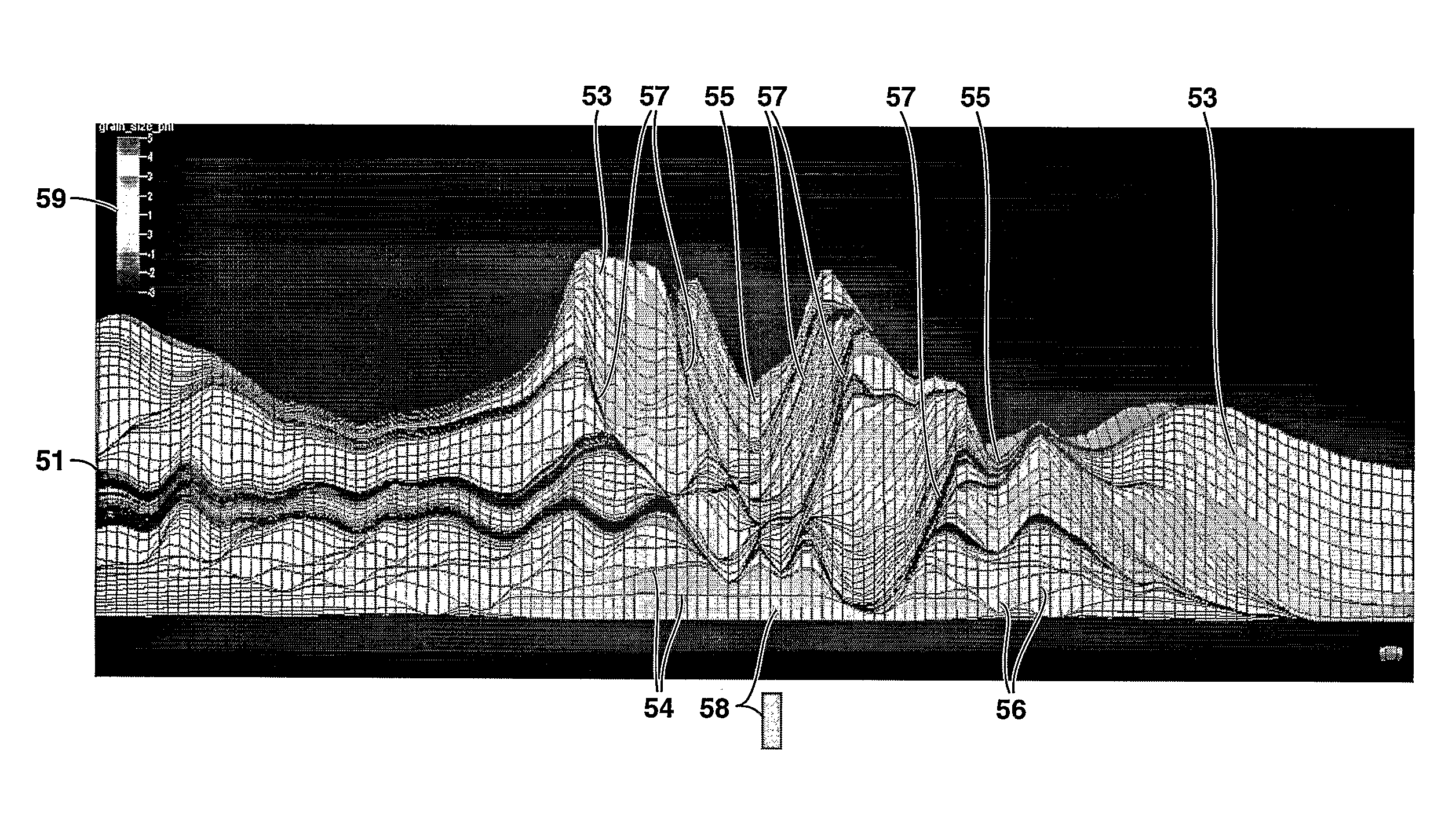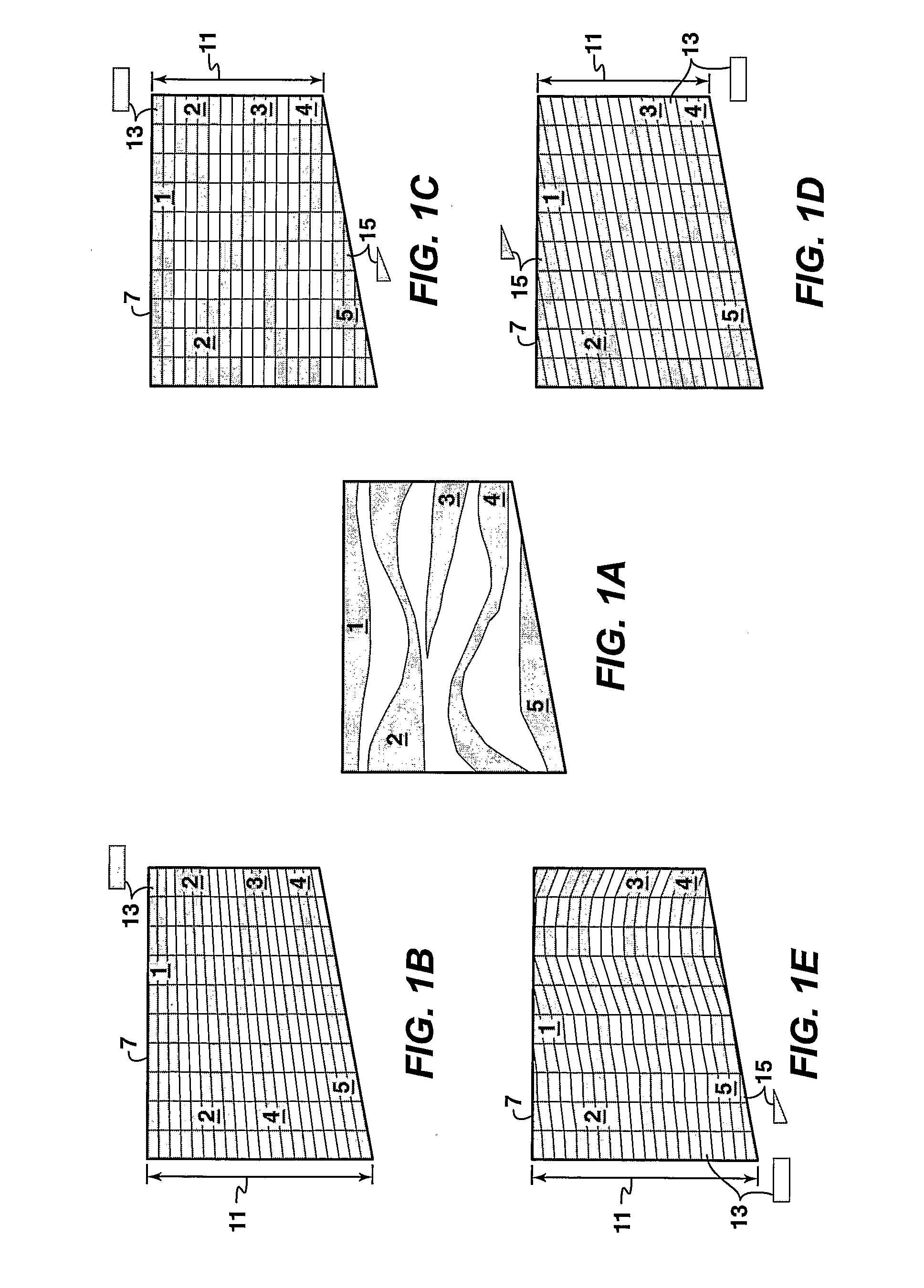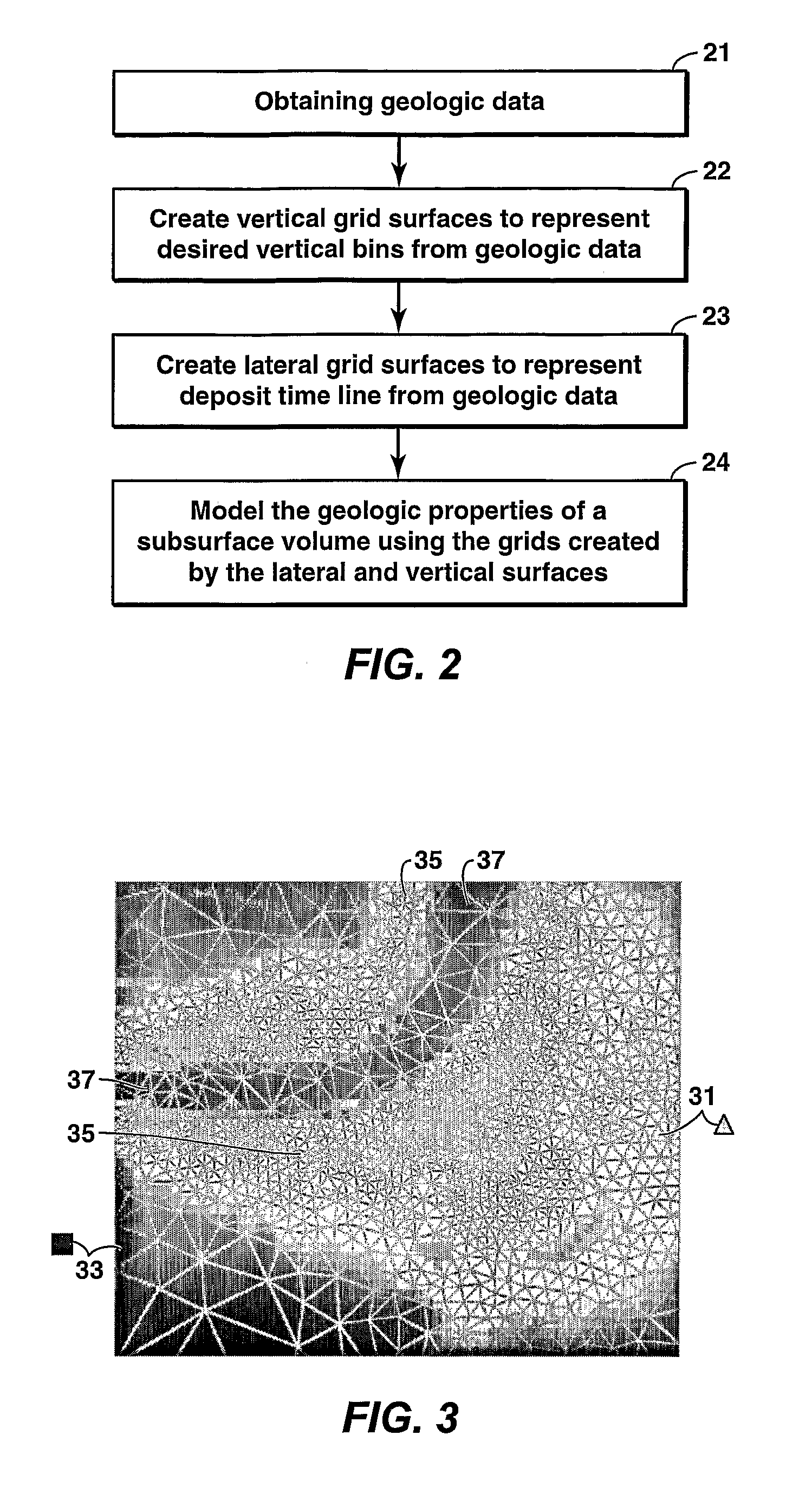Method for Geologic Modeling Through Hydrodynamics-Based Gridding (Hydro-Grids)
- Summary
- Abstract
- Description
- Claims
- Application Information
AI Technical Summary
Benefits of technology
Problems solved by technology
Method used
Image
Examples
example
[0064]FIG. 7 shows a cross-section of a complex avulsive sand body 51 composed of several sand body lobes 53 and channels 55 simulated by using a physics-based sedimentary process simulator. FIG. 7 shows that in complex sand body 51 lobes 53 and channels 55 are maintained accurately in the Hydro-Grids 58 utilizing lateral grid lines or surfaces 54 in connection with vertical grid line or surface 56. The erosion (or truncation surfaces) 57 that are important to reservoir performance simulation are preserved. The color-scale 59 in FIG. 7 represents average grain size in the phi scale (from 5 to −3).
[0065] The Hydro-Grids idea can also be used in many commercially available sedimentary process simulators. FIGS. 8(a) and 8(b) illustrate example simulation results from a sedimentary process simulator, which populates sand bodies 61 of different size and shape to form a complex clastic deposit 63. FIG. 8(a) illustrates sand body locations 61 and sizes within an example fan delta 65, and ...
PUM
 Login to View More
Login to View More Abstract
Description
Claims
Application Information
 Login to View More
Login to View More - R&D
- Intellectual Property
- Life Sciences
- Materials
- Tech Scout
- Unparalleled Data Quality
- Higher Quality Content
- 60% Fewer Hallucinations
Browse by: Latest US Patents, China's latest patents, Technical Efficacy Thesaurus, Application Domain, Technology Topic, Popular Technical Reports.
© 2025 PatSnap. All rights reserved.Legal|Privacy policy|Modern Slavery Act Transparency Statement|Sitemap|About US| Contact US: help@patsnap.com



